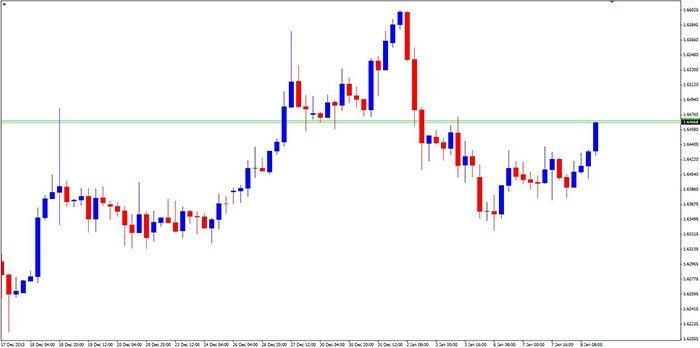There are Layers to the Forex MarketThe Forex market is a global market that runs 24 hours a day for 5 days of the week. Among the participants there are scalpers, day traders, swing traders, breakout traders, and position traders. Even with swing trading alone there are different groups of people swing trading different time frames. If you combine all of that with the governments trying to control their currency, the central banks trying to control inflation, and large corporations just going about their daily business, it’s not hard to comprehend how the Forex market can have layers.
While not entirely impossible it would be way too complicated for the average technical analyst to follow all of these layers. In fact, all you need to trade intelligently is to follow 2 layers so that you can properly read all of the chart patterns that have been outlined so far. If you wish to add a 3rd then you should only do so after you have mastered trading the 2. So let’s take a look at how to read 2 layers and if you wish to extrapolate from that you will understand how to add a 3rd.
Using 1 Chart to Read 2 LayersIt is the belief here at ElectroFX.com that the easiest way for anyone to understand this concept is by using a price based chart. The type of chart that has proven to be the smoothest and therefore clearest of them all is the median renko chart. Without scrolling around and trying to find you perfect examples like at many websites, let’s take a look at what is happening right now as this lesson is being written. Here is the GBPUSD median renko chart set at a value that closely represents the 4 hour candlestick chart and with 2 layers of the market mapped out for you.

Applying your analysis to 2 market layers means that the slowest layer you are watching (the green layer in this image) are the moves that you really want to be trading. Chart patterns can then be used on the fastest layer you are watching (the brown layer in this image) to help confirm the direction change of the slower layer.
 Using 1 Layer to Trade the Other Layer
Using 1 Layer to Trade the Other LayerNow that you have had a visual representation of reading 2 market layers you should be able to see how chart patterns can be used on both. On the slowest layer you are watching you can use the chart patterns to understand what type of trade you are taking. On the fastest layer you are watching you can use the chart patterns to actually trigger the trade.
 Trade A:
Trade A:You slowest layer (the green line) is displaying a 3-point turn pattern and that tells you what type of trade you are taking. Your faster layer (the brown line) is also displaying a 3 point turn pattern and that gives you a confirmation of probable direction change. There is a mirror flip double tap element to this trade at the green line scale but it is just off the screenshot to the left. Don’t worry, there will be plenty of examples showing this type of double tap in the rest of the material here at ElectroFX.com. Just focus on the concept right now.
So, at the green line scale you will be part of the wave that will be the 3-point turn pattern once it is complete, and at the brown line scale you are trading the 3-point turn pattern as a whole to confirm the direction change of the green line scale. There is a double tap involved at the green line scale so you know that this price area had order flow in the past, and even at the brown line scale this price area has proven that it is once again active (You could have even traded the brown double bottom earlier on but we won’t overload you just yet).
Trade B:You slowest layer (the green line) is displaying a trend continuation pattern and that tells you what type of trade you are taking. Your faster layer (the brown line) is also displaying a double bottom pattern and that gives you a confirmation of probable direction change. There is a mirror flip double tap element to this trade at the green line scale that you can see just to the left. This is too easy right? Don’t get too cocky because you haven’t met trading psychology yet!
So, at the green line scale you will be part of the wave that will be the trend continuation pattern once complete, and at the brown line scale you are trading the double bottom pattern as a whole to confirm the direction change of the green line scale. There is a double tap involved at the green line scale so you know that this price area had order flow in the past, and even at the brown line scale it has it’s own double tap built in.
Adding a 3rd LayerIf you are comfortable with this concept you can add a 3rd layer by simply extrapolating from what was explained so far. The beautiful thing about this concept is that the same idea applies to each layer and there is nothing new to learn. It is strongly recommended that you master 2 layers before adding a 3rd for for the sake of clarity let’s take a quick look.

When using a 3rd layer you could use a faster chart to simply use chart patterns once again, or you could use candlestick / bar patterns for entry. The spots marked X on this image show the time that you would be able to consider looking for a faster way in. Let’s not complicate things too much at this stage though, this is still basic training.
